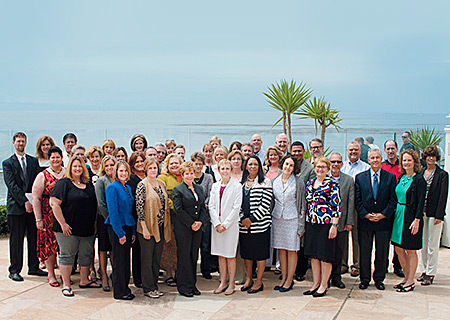Aug. 5, 2014

Complex issues shaped discussions at the 15th annual Health Care Industry Advisory Council Summit, April 30-May 2, 2013, in Santa Barbara, Calif. Some of the toughest topics on the Summit agenda covered obstacles in applications training, the need for nonpunitive incident reporting and the rate at which technology is evolving — faster than education and certification.
The explosion of technological complexity is affecting the health care industry, institutions and patient care. “Applications training is taking so much longer now,” stated Nanci Wozniak, vice president of Education Services at Siemens Healthcare. “PET-MR takes six weeks of dedicated time for the basic applications training. We know that’s a challenge for health care institutions with lean staffing that need to keep their equipment in use on patients.”
To demonstrate how complicated some medical processes have become, keynote speaker Eric Ford, Ph.D., of the University of Washington-Seattle, compared radiation therapy process charts from 1970 to today’s charts. “In 1970, one radiation therapy treatment took approximately 12 steps. Now, it takes closer to 300 steps, with each step an opportunity for error,” said Eric.
Luck favors the prepared, he added, quoting retired airline captain Chesley B. “Sully” Sullenberger III, who safely landed his US Airways jet and 155 passengers on the Hudson River in New York in 2009. “We must build a culture of safety through better patient handoffs, teamwork and increased incident reporting,” noted Eric. “Education and training must be ongoing, connected with incident learning, supported by the health care institution and documented.”
Because training requires learning the proper use of equipment, the ASRT Foundation and HCIAC created a subcommittee in 2012 on the advanced user definition. The subcommittee produced a definition that outlines the characteristics and expectations of medical imaging and radiation therapy professionals who show colleagues the safe and effective use of equipment.
Other presentations at the Summit included a report from the HCIAC subcommittee that developed the white paper “Patient Safety and Quality in Medical Imaging: The Radiologic Technologist’s Role.” Presenters discussed the paper at the 2013 ASRT Educational Symposium and the 2013 ASRT@RSNA meeting in Chicago. HCIAC members also finalized the “Commitment to Succeed” – a document manufacturers agreed to share with their customers. The document notes that applications training is a partnership between the vendor and the health care institution and working together improves patient care.